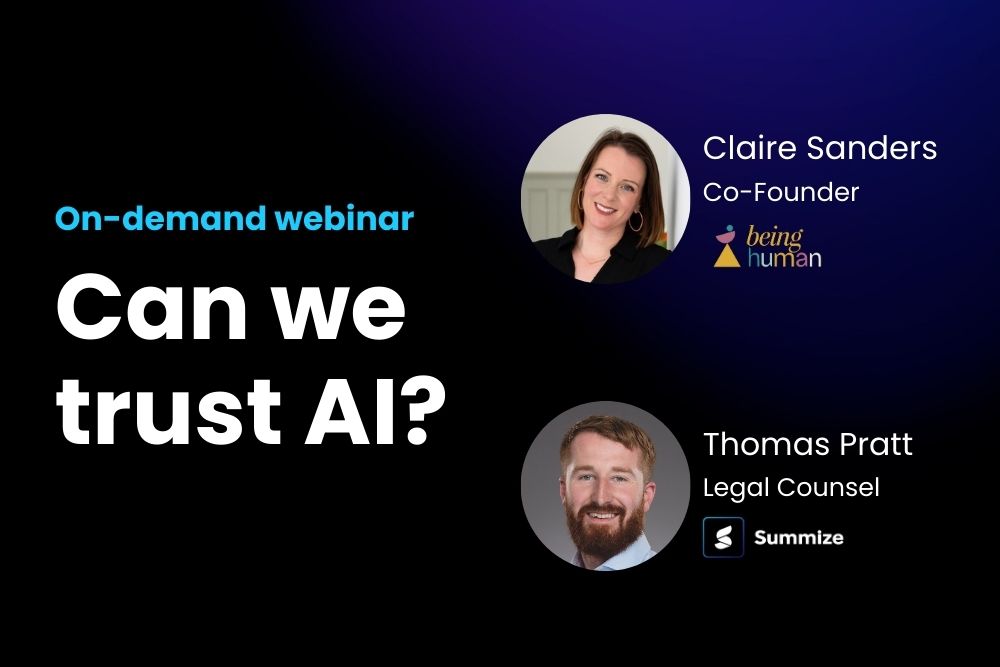CLM implementation: Is your business ready?
Contract lifecycle management software is a business-wide tool, but how do you know if your organization is ready to implement a cross-department CLM successfully?
July 31, 2023
November 26, 2025
Contracts are business-wide assets with multiple stakeholders who all have different goals. So, if your contract lifecycle is inefficient and slow, your business will feel the effects across the board, from revenue to department organization. Research by EY discovered that 57% of Business Development Professionals said that inefficiencies in their contracting process stalled deals and delayed their path to revenue.
This puts In-house legal teams at a crossroads. Their contracting processes are manual and confusing, dominating their daily workload. But, successfully implementing a CLM tool to eradicate these issues is challenging.
As with any software rollout, it will require some prep work. There’s a misconception that after purchasing software, you should be able to log in, and the automation will be instant. But the complexity of a CLM requires a set of unique stages that need careful planning.
This guide will help you establish if your organization is ready for a CLM and how to make it a success.
Signs you have a problem
If you work in a department that frequently interacts with contracts, you’ve probably encountered delays caused by bottlenecks in the contract lifecycle. And you've likely been inundated with contract requests if you are part of a legal team.
But CLM tools should be used by the wider business, not just the legal team. So, CLM implementation requires support from multiple cross-departmental stakeholders and their problems should also be considered when looking at a potential solution.
We’ve highlighted some of the most common reasons that businesses take on a CLM solution:
- There’s no technology infrastructure, and your current processes are manual
- Legal resource is stretched, and they are seen as a blocker
- Your contract processes are slow and causing bottlenecks
- You lack visibility into your portfolio
- Your legal team are doing repetitive work, preventing them from becoming business leaders
- The workload is outpacing the available resource
You’re probably asking yourself if you should invest in CLM software. If you’ve faced any problems above, the short answer is yes!
Day Wireless implemented Summize’s CLM solution for contract reviews and management. With no contract process in place, they were determined to find a CLM to bring their documents into the 21st century. By utilizing Summize’s integration with Microsoft Teams and Word, Day Wireless have been able to streamline and centralize their contract review process, reviewing on average 20% more contracts each week. Read the full customer story here.
How to prepare
All tech differs and has varied implementation requirements; a CLM tool is no exception. Poor or unplanned CLM implementations can stall or, even worse, fail! In fact, a report found that 77% of CLM projects result in failed technology implementation. But you can improve your organization's chances of success by focusing on a set of core elements and ensuring you have the best CLM tool by your side.
Secure cross-functional input
CLM tools are used by departments across the business, meaning that CLM implementation requires strong support from the leaders of these areas. To map out your stakeholders, think about every department that interacts with a contract in your business. Every pain point, inefficiency, and risk presents a new opportunity to deliver better results and savings.
Securing cross-functional input early on typically increases your ROI. Plus, getting the key people onboard from the beginning will make your adoption and approval process much more manageable. Ultimately these stakeholders will help drive adoption post-launch, so their engagement and enthusiasm for the project are critical!
“Ensure you have buy-in from the wider business. Involving our sales team from the beginning meant they were fully on board with the concept and were excited to start using Summize.” Katherine Kennedy, General Counsel at Pay.
You can read the full customer story here.
Do some housework
Before you can benefit from CLM adoption, you need to map out your existing processes from start to finish. Look where inefficiencies, bottlenecks and delays occur, and establish why. Then map out the most effective and efficient journey your contracts can take. Identify the milestones they must reach before the implementation can be considered a success.
Once you have mapped out your current and new processes, you can gather your legacy contracts to review and remediate your exciting templates. A CLM isn’t a magic wand; it won’t solve all your problems! So, if your existing templates are causing issues, they must be fixed first.
Have a vision
It starts with a strategy. Determine the goals you want to achieve and the problems a new CLM solution will solve. What’s the desired outcome? How will you measure its effectiveness?
You will need to establish the KPIs you can track to measure success. Technology implementations often have multiple goals, particularly CLM, so which goal is a priority?
Implementation & Onboarding
You’ve defined your CLM goals, aligned all the relevant stakeholders, got your house in order, and identified a suitable vendor. But what happens next?
A good CLM vendor will support you through every step, offering support and guidance that matches your unique business needs, helping you get to value faster.
Here at Summize, every customer benefits from a 12-week guarantee. Our timeline will depend on the size of your implementation project, which is impacted by the complexity of your workflows, your priority use cases, and how your contracts are currently set up and stored.
Kick-off & Foundations
During the kick-off phase, we will create a project plan based on your circumstances and advise on any areas in the implementation of Summize that could be speed up. We will move as quickly as you can! This stage will cover the following:
- A Kick-off Call to introduce the team, understand the customer use cases, and agree on priorities.
- A Project Design Call to talk through each element of the product, make decisions on workflows, and plan the timeline ahead.
- Identify potential obstacles to mitigate risks.
Solution build
Summize is designed to be used by legal and non-legal users, but it can still be daunting when setting up workflows. To remove the pressure, our Implementation Team will work with you to build the most efficient workflows for your organization.
Our team will collaborate with you to:
- Train Super Users on account configuration
- Configuration of your account, depending on your priority use cases
- Configuration of Create/Review workflows
- Configuration of contract summaries
- Configuration of your contract repository, including migration of existing contracts
- Help you plan for the launch
User training
Regardless of your experience with a CLM, it can be daunting when using a new system. To ensure you achieve maximum value, we run dedicated training sessions. Our implementation team will run dedicated training sessions for your team of 'Super Users' - our aim is that you become experts at using Summize! Gearing towards launch, we want to ensure you're ready and able to administer your account, with the support of Summize, to continue building on the success you've gained so far during implementation.
Led by our Customer Success Team, Summize is launched to the business and is now part of internal processes. Our Customer Success Team leads training sessions with business users, to equip them with the knowledge and training needed for them to hit the ground running from day one.
Launch
We want to ensure that you achieve maximum adoption across the business and return the greatest ROI, so during the training session we find it most beneficial for you to give context to your colleagues rather than our team by explaining:
- Why you have purchased Summize
- What problems you are trying to solve and how Summize will achieve this
- The benefits of adopting an integrated CLM for both the company and individuals
Remind your colleagues why the business has implemented a CLM and how it can benefit them. For example, Summize enables sales teams to self-serve on low-risk contract generation such as NDAs without legal intervention, meaning they’ll be able to create agreements in 2 minutes and close more deals, faster.
Adoption
The final stage! Led by our Customer Success Team, Summize is launched into the business and will now be part of your internal processes. We will continue to work closely with your teams and users to ensure maximum adoption of Summize, providing best practice advice and ongoing learnings to ensure maximum value returned from your investment.
Discover even more!
Explore more about contracting and CLM in our ultimate contract guides








